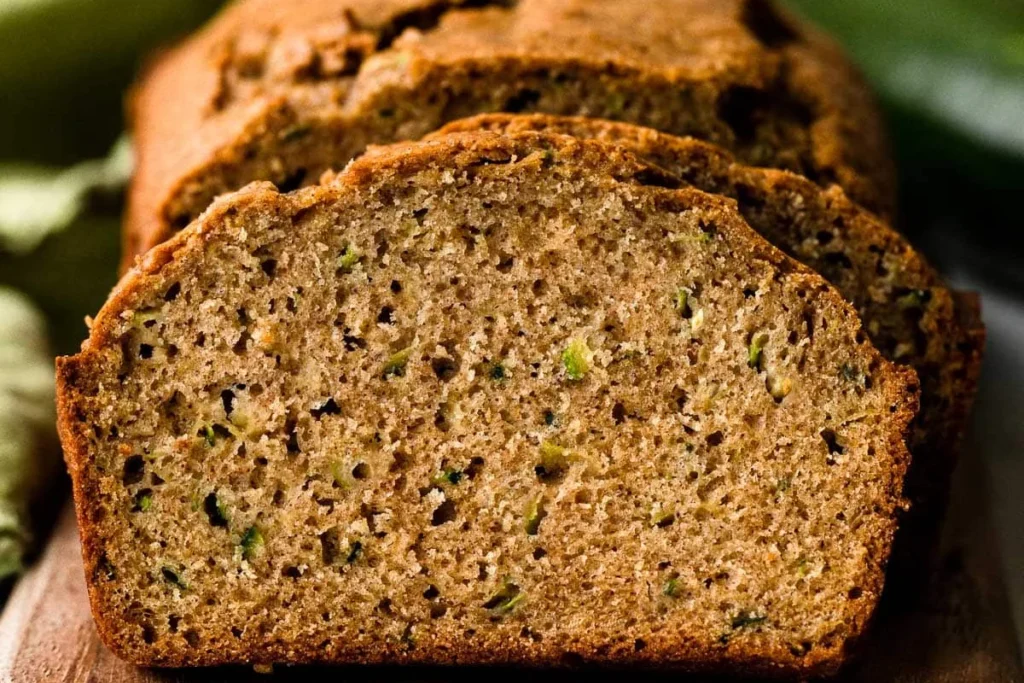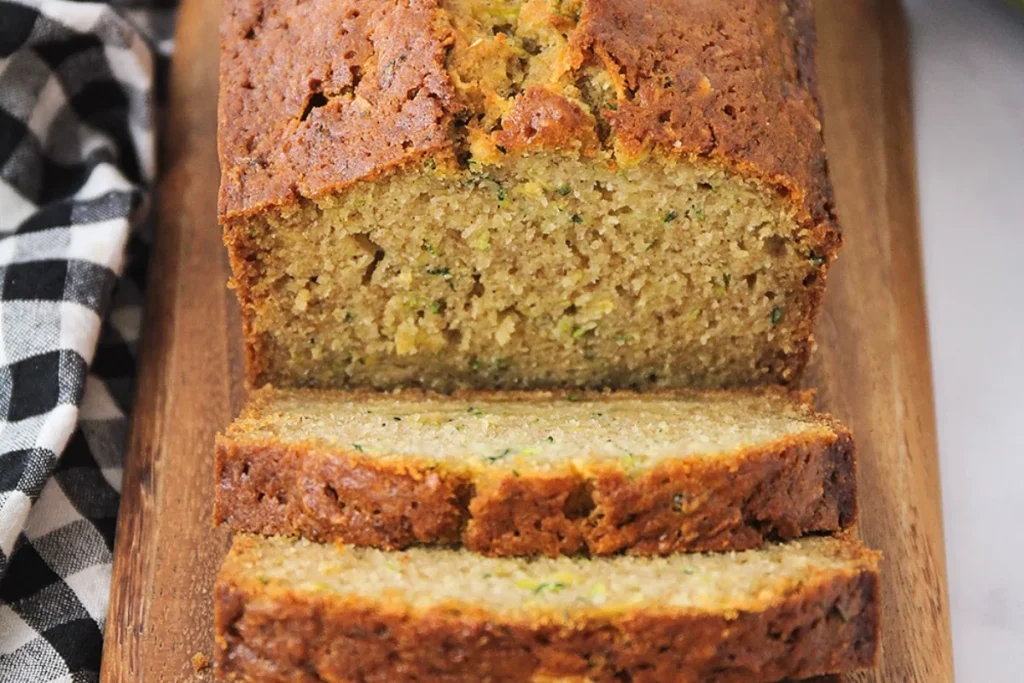Zucchini bread is a beloved treat, cherished for its moist texture and sweet, yet slightly savory, flavor. However, bakers often face a common dilemma – soggy zucchini bread. This issue can transform a potentially delicious loaf into a disappointing, mushy mess. Understanding the root causes of this problem is crucial for anyone looking to master the art of zucchini bread making.
- Discovering the balance between moisture and dry ingredients is essential.
- Properly preparing zucchini, from shredding to draining, plays a pivotal role.
- Mixing techniques and ingredient ratios significantly impact the final texture.
- Baking time and temperature must be optimized to avoid undercooked outcomes.
By focusing on these key areas, bakers can ensure their zucchini bread turns out perfectly moist, without being soggy. This introduction sets the stage for an in-depth exploration of how to achieve that ideal balance, promising readers practical solutions to a common baking challenge.
Common Problems Leading to Soggy Zucchini Bread
Excess Moisture in Zucchini
Excess moisture in zucchini is often the culprit behind soggy zucchini bread. Zucchini naturally contains a high water content, which can significantly affect the bread’s texture. To achieve the perfect loaf, managing this moisture is key.
- The first step is to grate the zucchini finely.
- After grating, it’s crucial to drain the zucchini thoroughly.
One effective method for removing excess water is to wrap the grated zucchini in a clean kitchen towel and squeeze out the moisture. This step ensures that your bread maintains its structure without becoming too wet. For more detailed instructions on preparing zucchini for baking, consider visiting Easy and Moist Banana Zucchini Bread Recipe, which offers a comprehensive guide.
Another approach involves salting the shredded zucchini and letting it sit for 10-15 minutes before squeezing out the water. This not only draws out moisture but can also enhance the flavor of your bread. For a step-by-step process, Choosing the Right Flour for Zucchini Bread provides excellent tips on moisture management and ingredient selection.
- Ensuring the zucchini is properly prepared can make all the difference.
By focusing on these techniques, bakers can prevent their zucchini bread from becoming too soggy, leading to a perfectly moist and delicious loaf every time.
Improper Mixing Techniques
Improper mixing techniques can significantly impact the texture of zucchini bread, leading to common issues like sogginess or uneven baking. Understanding how to mix correctly is crucial for a successful loaf.
- Start by combining dry ingredients separately from wet ones.
- Gently fold the wet ingredients into the dry, avoiding overmixing.
Mixing too vigorously or for too long introduces excess air and gluten development, which can make the bread tough and dense. It’s essential to mix until just combined; the batter should still have some lumps. For a visual guide on the perfect mixing technique, Mastering Zucchini Bread Baking Techniques offers excellent advice.
- Use a folding motion rather than a stirring one to incorporate ingredients.
This approach ensures that the zucchini bread has a tender crumb and rises properly during baking. Remember, the goal is to create a uniform batter that retains moisture without becoming overly wet or dense.
Ingredient Ratios and Types
The balance of ingredient ratios and the selection of ingredient types are pivotal in crafting the perfect zucchini bread. Achieving the right consistency and flavor hinges on these factors.
Flour Choices
- Opt for all-purpose flour for a balanced structure.
- Whole wheat flour can add density; use sparingly or in combination.
Sugar and Fats
- The right amount of sugar enhances moisture and flavor.
- Fats like oil or butter contribute to the bread’s moist texture.
Leavening Agents
- Baking powder and baking soda are essential for rise and texture.
- Ensure leavening agents are fresh to avoid flat or dense outcomes.
Mixing the correct proportions of these ingredients ensures the bread is moist without being soggy. For instance, too much flour can make the bread dry, while insufficient leavening agents may not allow it to rise properly. Adjusting these ratios according to the recipe and sometimes to personal taste or dietary needs can lead to the best results.
Incorporating these insights into your baking process will significantly improve the quality of your zucchini bread, making it a delightful treat for any occasion.
Baking Time and Temperature
Correct baking time and temperature are crucial for ensuring your zucchini bread comes out perfectly baked, not soggy.
- Preheat your oven to the recipe’s specified temperature before baking.
- Most zucchini breads bake well at 350°F (175°C).
Adequate preheating ensures the bread starts baking at the right temperature, crucial for texture and rise. Baking time varies, but a standard loaf often requires 50-60 minutes. To check for doneness:
- Insert a toothpick into the center; it should come out clean.
- The top should be golden and the edges slightly pulling away from the pan.
Adjusting the oven’s temperature or baking time based on your specific oven and the size of your loaf pan may be necessary. Remember, ovens can vary, so keeping an eye on your bread as it bakes is wise. This careful attention to time and temperature will help you avoid the common pitfall of soggy zucchini bread.
Storage Practices
Proper storage practices are essential to maintain the freshness and texture of zucchini bread after baking.
- Allow the bread to cool completely before storing.
- Wrap tightly in plastic wrap or aluminum foil to retain moisture.
Storing zucchini bread correctly prevents it from becoming too dry or soggy. For short-term storage:
- Keep at room temperature for up to 2 days.
- Ensure it’s in a cool, dry place away from direct sunlight.
For longer preservation:
- Refrigerate wrapped bread for up to a week.
- For freezing, slice and wrap pieces individually, then place in a freezer bag.
Frozen zucchini bread can last for 2-3 months. Thaw at room temperature or in the microwave when ready to enjoy. These storage tips help extend the life of your zucchini bread, ensuring it remains delicious and moist for as long as possible.
Advanced Baking Tips to Prevent Sogginess
Achieving the perfect zucchini bread that’s moist without being soggy involves more than just following a recipe. Here are advanced tips to elevate your baking game.
Choosing the Right Zucchini
- Select small to medium-sized zucchini for less moisture.
- Fresh zucchini tend to have a firmer texture and less water content.
Prepping Zucchini Properly
- Salt shredded zucchini, then let it sit to draw out moisture before squeezing.
- Use a cheesecloth or fine mesh strainer for effective moisture removal.
Ingredient Adjustments
- Experiment with flour types; a mix of all-purpose and whole wheat can offer a good balance.
- Adjust sugar levels slightly to affect moisture and texture without compromising taste.
Baking Techniques
- Consider lowering the oven temperature by 25°F and extending baking time to ensure even cooking.
- Use an oven thermometer to guarantee accurate temperature settings.
Testing for Doneness
- Use a digital thermometer; zucchini bread is done at an internal temperature of 200°F.
- Look for a golden crust and a skewer that comes out clean from the center.
By incorporating these advanced techniques, bakers can tackle the common issue of sogginess head-on, ensuring their zucchini bread is perfectly moist every time. These tips not only improve texture but also enhance flavor, making your bread a guaranteed hit.
Choosing the Right Zucchini
Selecting the ideal zucchini is a crucial step in baking delicious, non-soggy bread.
- Opt for small to medium-sized zucchini, as they contain less moisture.
- Freshness matters; fresh zucchini should feel firm to the touch.
These characteristics ensure that your zucchini bread has the perfect moisture content, avoiding the common pitfall of sogginess. By starting with the right zucchini, you set a solid foundation for a successful loaf.
Alternative Flours and Their Impact
Exploring alternative flours can significantly alter the texture and flavor of zucchini bread.
- Almond flour adds moisture and a nutty flavor, but may require more binding agents.
- Coconut flour is highly absorbent, necessitating additional liquids to maintain moisture.
Incorporating these flours can introduce new dimensions to your bread, making it a delightful experiment in baking. Adjusting recipes to accommodate these flours ensures a moist, flavorful loaf every time.
Experimenting with Baking Techniques
Diversifying your baking techniques can elevate the quality of your zucchini bread.
- Try using a water bath to evenly distribute heat and prevent the edges from drying out.
- Incorporating a steam bake at the beginning can enhance the loaf’s rise and crust.
These methods introduce moisture and heat in controlled ways, refining texture and appearance. By experimenting with these techniques, bakers can discover the perfect balance for their specific oven and recipe, leading to consistently excellent zucchini bread.
FAQs
Why does my zucchini bread sink in the middle?
Zucchini bread might sink in the middle due to overmixing the batter, causing too much air to be incorporated and then collapse during baking. Another reason could be opening the oven door too early, leading to a sudden drop in temperature. Ensure even mixing and keep the oven door closed until the final minutes of baking.
How can I make my zucchini bread more flavorful?
To enhance the flavor of your zucchini bread:
- Add spices such as cinnamon, nutmeg, or vanilla extract.
- Incorporate nuts or dried fruits for texture and taste.
- Use brown sugar instead of white for a deeper flavor profile. Experimenting with these additions can significantly elevate the taste of your bread.
What to do if zucchini bread is undercooked?
If your zucchini bread is undercooked:
- Return it to the oven for an additional 5-10 minutes.
- Cover the top with foil if it’s already browned to prevent burning.
- Use an oven thermometer to ensure accurate baking temperatures for future attempts. Checking for doneness with a toothpick or internal temperature gauge can prevent undercooking.
Can I use frozen zucchini for baking bread?
Yes, frozen zucchini can be used for baking bread. However, it’s important to:
- Thaw the zucchini completely and drain any excess water.
- Squeeze out additional moisture with a towel to avoid soggy bread. Frozen zucchini might introduce more water into the batter, so adjusting by adding a bit more flour or reducing other liquids might be necessary.
Conclusion
In conclusion, mastering the art of baking the perfect zucchini bread involves understanding and addressing several key factors. From selecting the right zucchini to adjusting ingredient ratios, mixing techniques, and baking conditions, each step plays a crucial role in avoiding the common pitfall of sogginess. Experimenting with alternative flours and innovative baking techniques can further enhance the texture and flavor of your bread, making each loaf a delightful culinary adventure.
Remember, the journey to perfect zucchini bread is both an art and a science. Paying attention to the FAQs can provide additional insights and solutions to common baking challenges, ensuring your bread is flavorful, moist, and perfectly baked every time. Whether you’re a novice baker or a seasoned pro, embracing these tips and tricks will elevate your zucchini bread from good to great, making it a cherished treat for friends and family alike.
Ultimately, the key to success lies in patience, precision, and a willingness to experiment. By fine-tuning your approach and learning from each baking experience, you can achieve the ideal balance of moisture and flavor, resulting in a zucchini bread that’s nothing short of spectacular.


